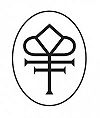Graduate School of Arts and Sciences
| Graduate School of Arts and Sciences | |

| |
| Established | 1880 |
| President | {{{President}}} |
| Dean | Carlos J. Alonso |
| Degrees | MA, PhD |
| Enrollment | 4,157 students (2005) |
| Website | www.columbia.edu/cu/gsas/ |
The Graduate School of Arts and Sciences (GSAS) is Columbia's graduate school for subjects that don't fall under the auspices of professional schools, like law and medicine. GSAS students typically train to become academics or to work in other knowledge professions.
History
Unlike at many schools, graduate studies originally didn't take place under the auspices of a single Faculty of Arts and Sciences or graduate school. Instead Columbia had three graduate faculties that wouldn't be combined to form GSAS until 1979- Political Science (founded in 1880[1]), Philosophy (1890), and Pure Science (1892). The establishment of the School of Political Science in 1880 took the combined efforts of President Barnard, trustee Samuel Ruggles, and Professor of Political Science John W. Burgess, who was looking for a way out of having to teach undergraduates. Ruggles telegraphed Barnard after the trustees voted to establish the new school "Thank God! The University is born."
Columbia conferred its first PhD in 1882 to Charles Wells Marsh for his study "Geology of Water Supplies and Water Analysis". The graduate program was open to women far before any other division of the school. In 1886, Winifred H. Edgerton earned a PhD for her dissertation "Multiple Integers". In 1912, George Edmund Haynes was the first African-American to receive a Columbia PhD. His disseratation was titled "The Negro at Work in New York City".
The school, and faculties, only stumbled as a result of the financial crunch imposed by the depression, and then the calamitous financial free fall of the 60s and 70s that imposed hiring freezes among other cost cutting measures. (See: Marcus Commission Report)
Since its creation and until the 1990s, the graduate school stood in stark contrast to Columbia College in its standing with the University. While the grad school was called "the Jewel in Columbia's Crown," successive University presidents considered the undergraduate school a waste of resources that could instead be lavished on what was for the first half of the 20th century one of the indisputably best graduate schools in the country, if not the world. It's no coincidence that Columbia was able to attract so many world famous researchers- they weren't required by the school to teach undergraduates.
Subdivisions
Divisions into Faculties, and subdivisions into divisions, and subsubdivisions into departments, can be found at the Departments page.
References
| Columbia University Schools |
| Architecture, Planning and Preservation • Arts • Arts and Sciences (Graduate School) • Business • Columbia College • Dentistry • Continuing Education • Engineering • General Studies • International and Public Affairs • Journalism • Law • Medicine • Nursing • Public Health • Social Work |
| Affiliated Institutions |
| Barnard • Jewish Theological Seminary • Teachers College • Union Theological Seminary |
| Defunct Schools |
| Pharmacy • Library Service |